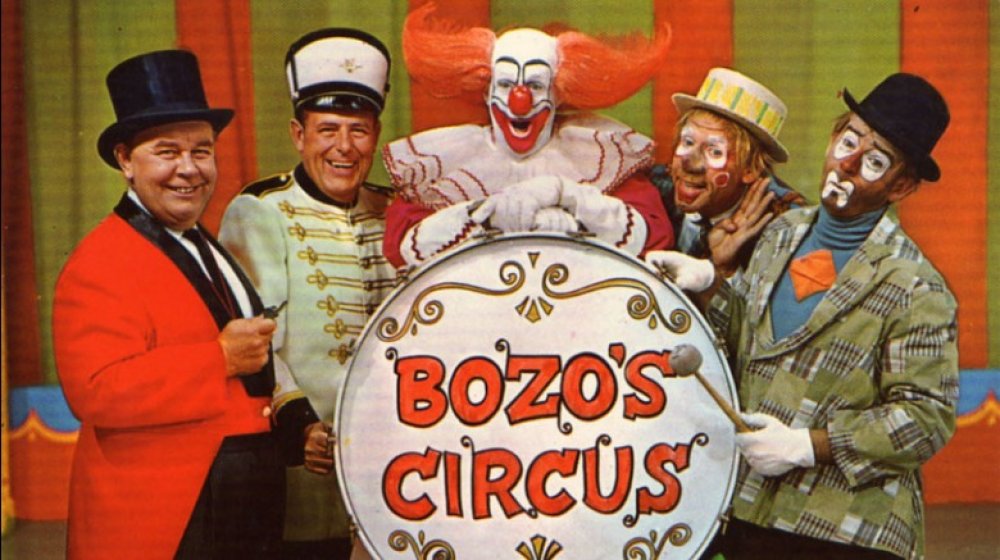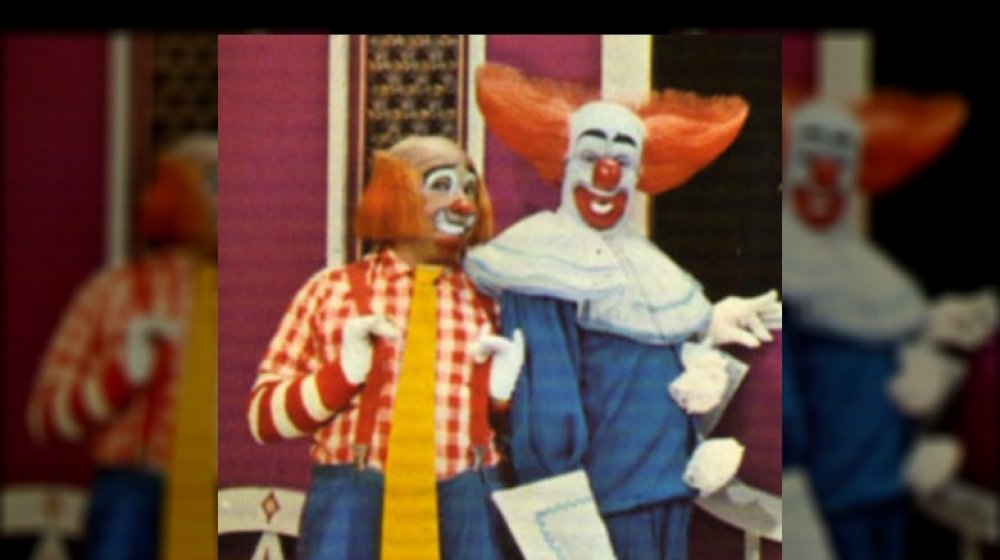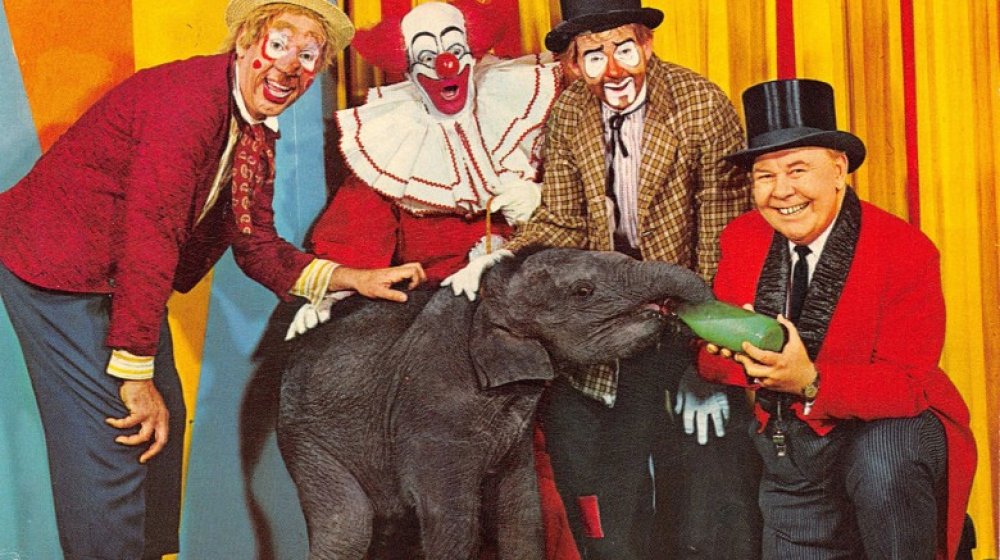Whatever Happened To The Man Who Played Bozo The Clown?
Oh, those starry-eyed idealists. Back when television was new, it was local, too — individual stations produced their own programming, whether farm reports, or movie emcees, musicians — and children's programming. The movie studios bolstered their bottom lines by selling off their inventory of animation and comedy shorts — The Three Stooges are a notable example — that were often presented in after-school time slots by an adult in character as a cowboy, or a sea captain, or any number of other personalities. Children were often in the studio audience. If a station couldn't afford to create its own daily 30- or 60-minute kids' programming, or lacked the creative oomph, there were still options: network feeds, like Captain Kangaroo, or a mish-mash of syndication or franchising. Just like fast food, children's programming was sometimes franchised: here's the format, here's the set, here's the script — go hire somebody.
According to Hi There, Boys and Girls!, Tim Hollis's exhaustive history of early children's TV, the most successful was a format called Romper Room, which could be localized with a young woman as host — usually a kindergarten teacher by background — and local children as the "students." It took itself seriously: each episode started with the Pledge of Allegiance; there were short lessons in making good choices.
Bozo was a feature of local television production nationwide
All very uplifting, and all very successful. Lest anyone think children's TV programming was nothing but educational brainwashing to produce automaton drones, the same business model also offered semi-organized chaos, in the form of a clown: Bozo.
Bozo wasn't actually created for TV, though he could have been. The character was the invention of an executive at Capitol Records, says The Ringer, for a combination record-storybook about the adventures of the titular character. It was performed by a former vaudevillian and voice actor named Pinto Colvig, with the first release in 1946, according to Hollis. Pinto played the clown on local Los Angeles TV starting in 1949. And then came 1956 and Larry Harmon, says the Chicago Tribune, who bought the rights to the character for animation and voiced the character himself. He started leasing the cartoons and the character to local stations in 1958. As with Romper Room, local stations hired local talent to perform in the distinctive Bozo getup (they were required to buy the costume and the cartoons from Harmon, who also collected a licensing fee).
Elephants were optional
And it worked. To the point that by 1966, Harmon felt like he was losing control of the character, and so he anointed the Bozo at WHDH in Boston, Frank Avruch, to be the National Bozo, so to speak, for a syndicated program. Harmon still ended up training other Bozos (really, they didn't take it personally) to perform the act, and tried another syndicated program in the mid-1970s, using Art Cervi as Bozo, but it didn't catch on.
Chicago's WGN had been carrying the daily Bozo's Circus since 1961. When the local station became the superstation with the advent of cable, their Bozo — Bob Bell, and later Joey D'Auria — were, in effect, National Bozo.
Harmon died in 2008 at the age of 83. Frank Avruch died in 2018, age 86. Pinto Colvig passed away in 1967 at 75. PBS tells us that Willard Scott, long-time weatherman for The Today Show, spent some time as a Bozo in the Washington, D.C. area. Perhaps as many as 200 carried the Bozo seltzer bottle over the years. Nobody's quite sure.


